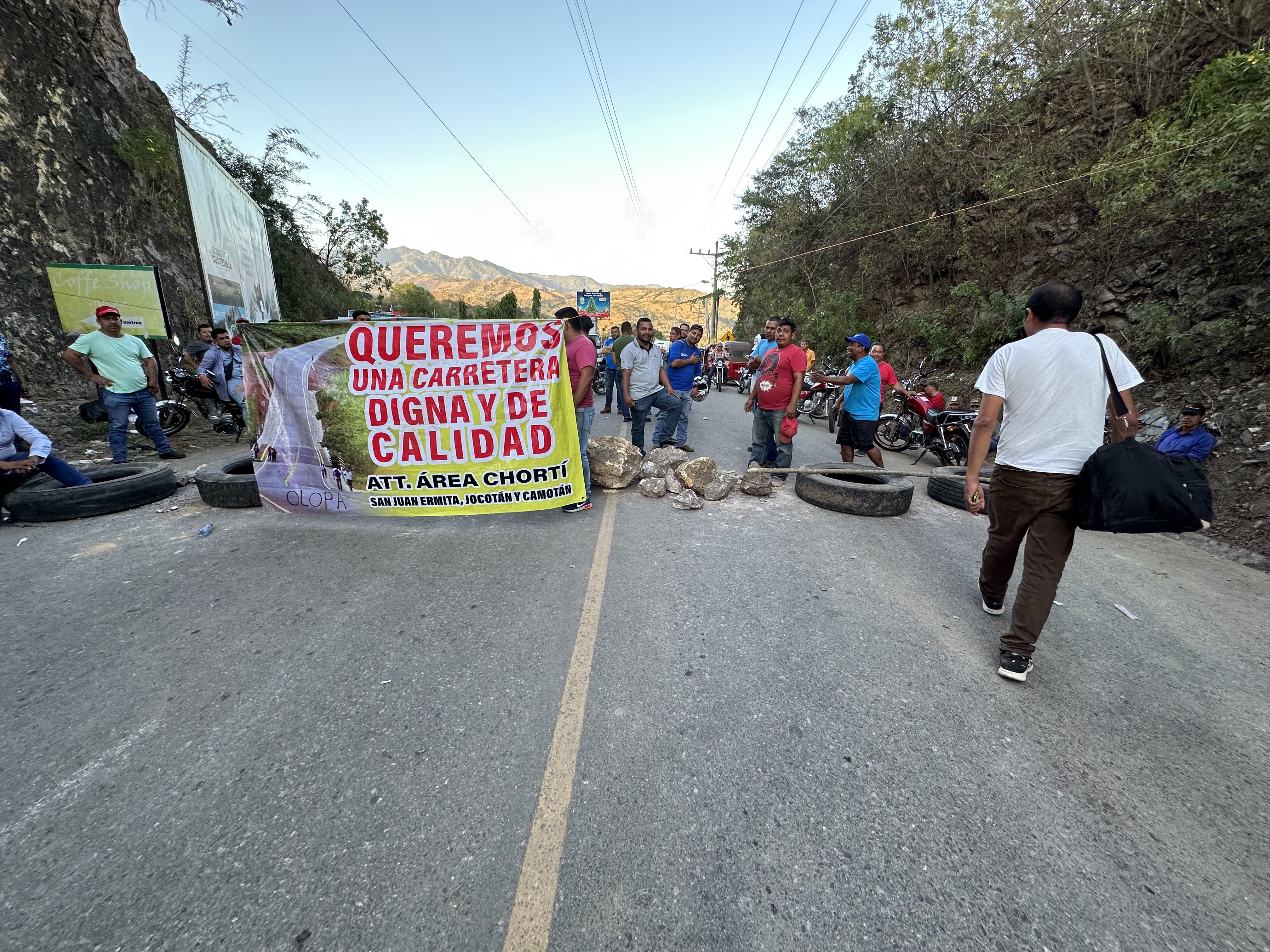
El Salvador to Guatemala
After two nights in Succitoto at the splendid hotel Los Almendros de San Lorenzo (highly recommended), we left for Honduras via Honduras and Guatemala. We were facing three border crossings. Into Honduras, into Guatemala, then back into Honduras. I blame the road planners.
During our brief lunch stop in Guatemala, we stopped in the town of Esquipulas which is home to the most famous cathedral in Guatemala. People flock from all over the country to visit. Some of the local shops were solely purveyors of religious nick-naks. There was a room outside totally dedicated to candles. It was warm in there.
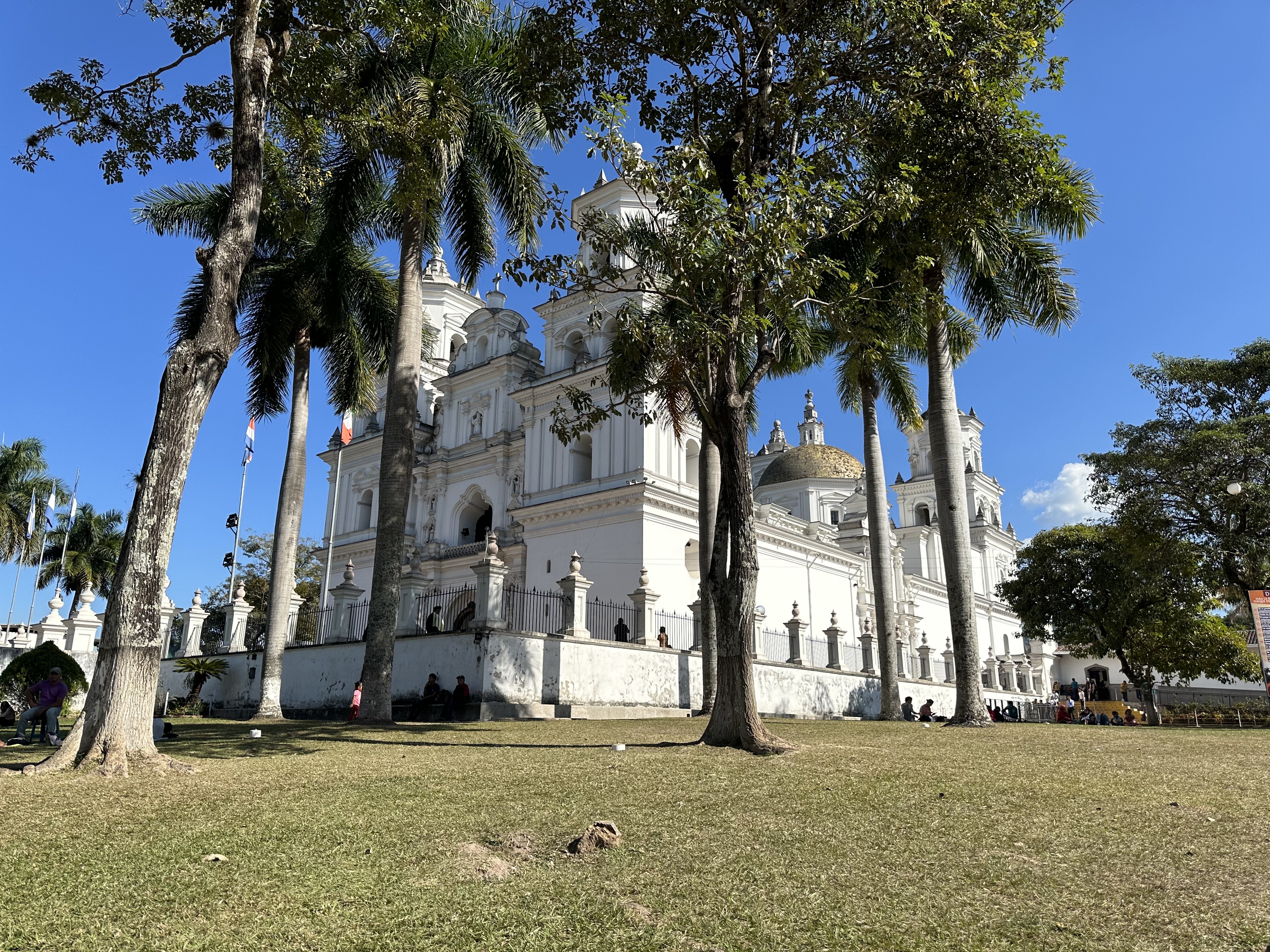
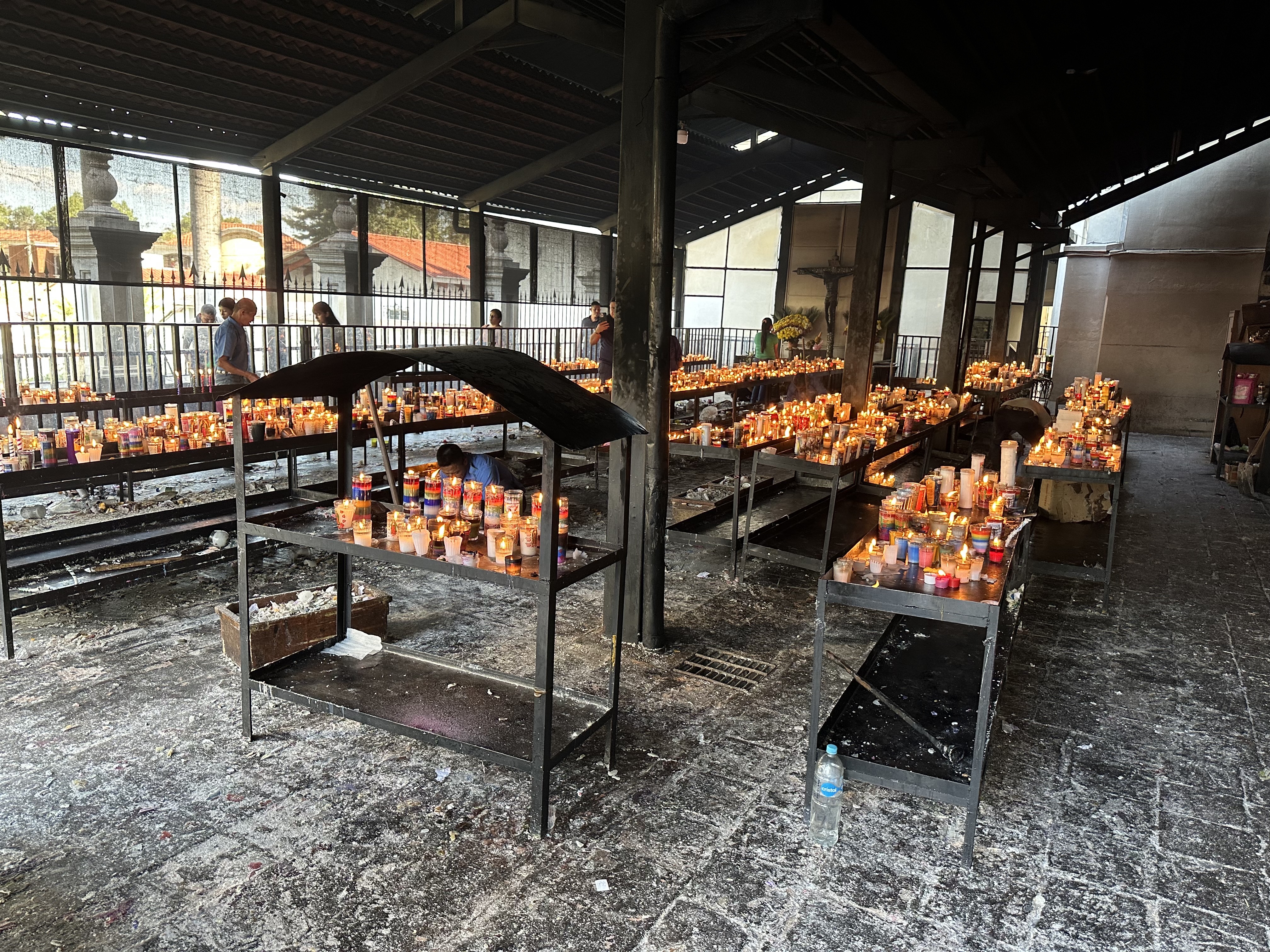
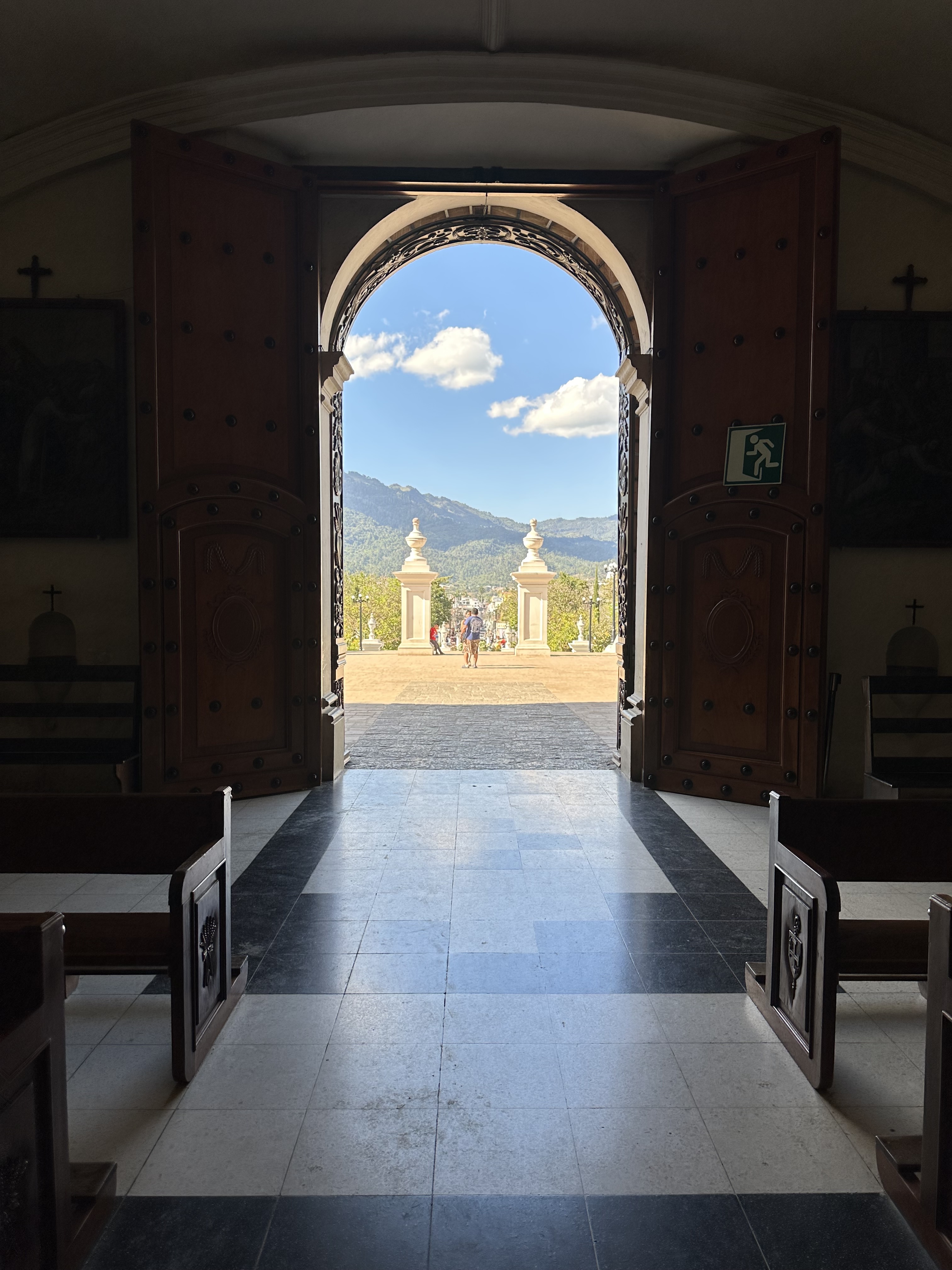
We ended up having breakfast in El Salvador, lunch in Guatemala, and dinner in Honduras. The first two border crossings were very smooth, but the third was an adventure. There was a demonstration around 15 miles short of the border and trucks were backed up from the picket line. A picket line that actually had rocks in the road. We disembarked the bus and walked about a mile to get beyond the picket line. Miguel had organised transport the other side and we piled into a small minibus, with a defective door, to the border. Geraldin stayed behind with the bus and the luggage. We thought he’d arrive later but he ended up spending the night on the bus. We arrived in the Honduran city of Copan in the evening and I dined with three of the non-men.

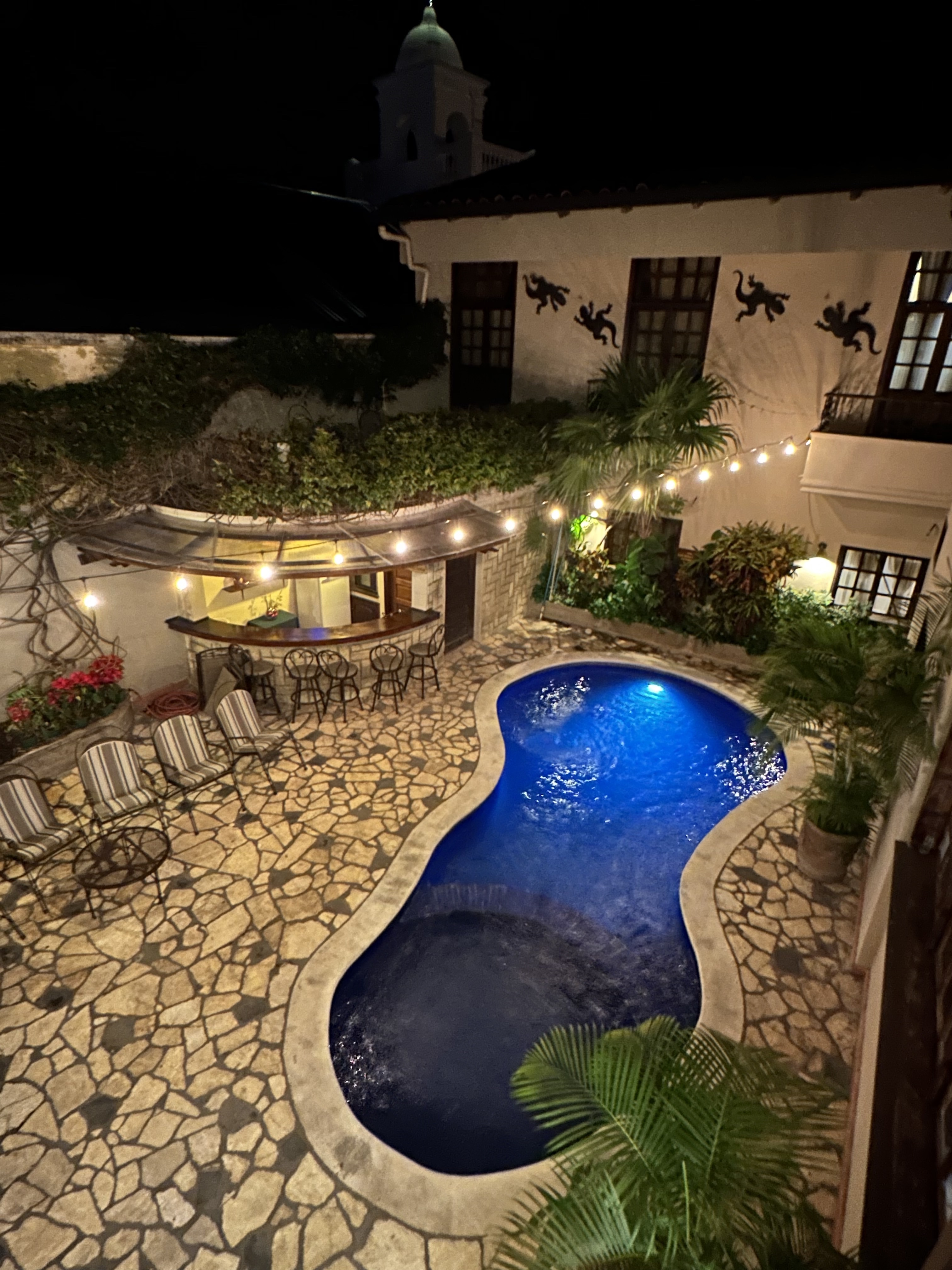
Day 12. Copan Honduras to Guatemala City
I woke up and wasn’t sure what country I was in. The previous day had been confusing. Copan is famous for its Mayan ruins and our morning activity was to visit them. We walked to the site and had a few hours touring the site with our guide, Gladys. The day started off hazy and a little chillsome, but it wasn’t long before the sun appeared and I became overdressed.
The ruins were excellent and Gladys did a fine job entertaining us with her knowledge. After being fully ruined I headed for town and wandered around watching how Tuesday unfolded for the locals. I found a bar where I could watch the world go by, catch up with the blog and drink wine. Some favourite pastimes.
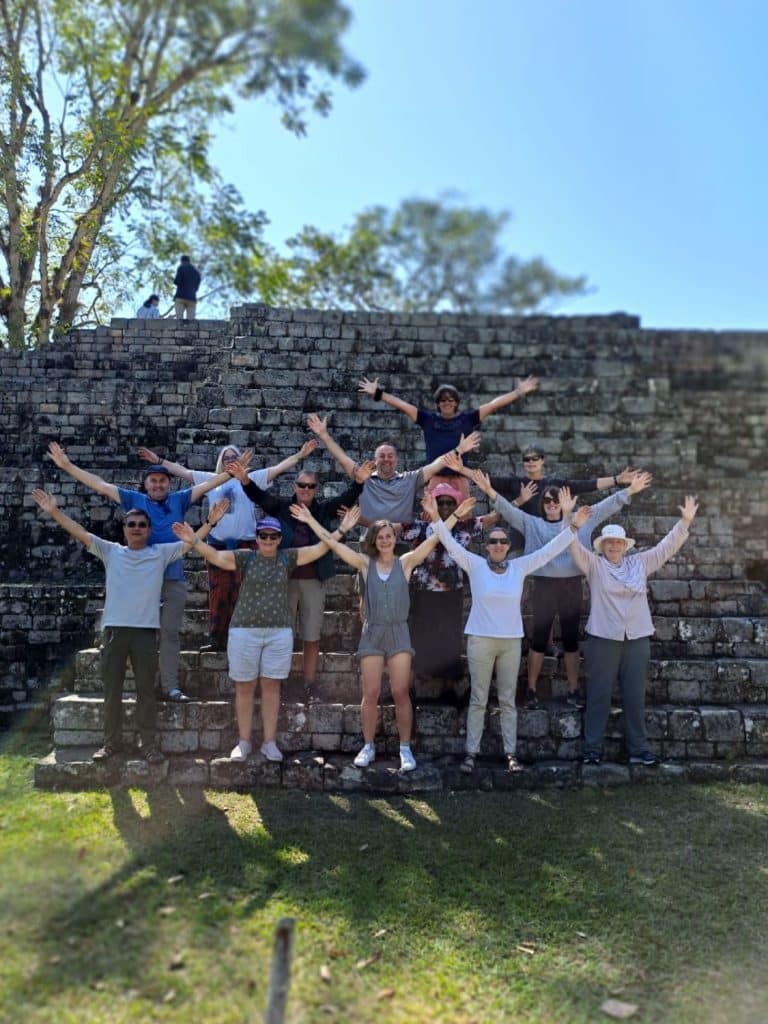
At lunchtime we headed back to the Honduras/ Guatemala border with the help of Brian (good Honduran name that), who had been our saviour the night before. The demonstrators were still there and the line of trucks had grown longer. Brian drove us as far as he could and we walked the rest in hot sunshine. It was terrific as far as I was concerned but I’m not sure the others enjoyed it as much. We reached Geraldin and hugged him. He’d been a trooper and we were all grateful.
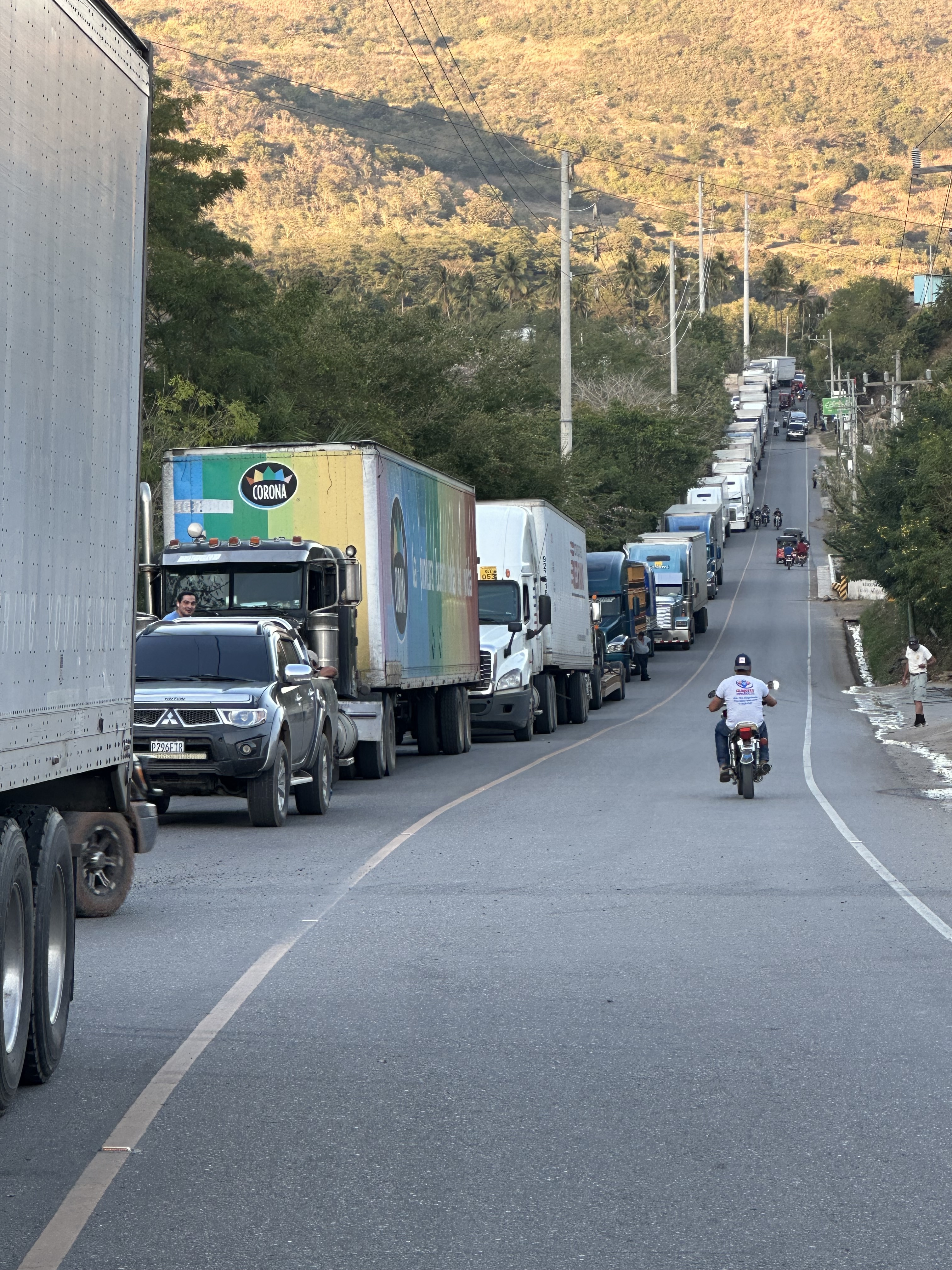
We had a five hour drive to Guatemala City which is the capital and home to about one million people. If I was to make one observation about Guatemala City it would be, shit traffic. I blame the road planners.
We arrived at the Best Western Plus which turned out to be the only hotel on the trip with keycard entry. All the others had some old fashioned thing called a “key”. I think the “plus” status might have been achieved due to the fitness room. I wonder if there was a “Best Western Minus” anywhere.
Day 13 – Guatemala City to Lake Atitlan
We left early and went on a panoramic city tour. It’s a great word, panoramic. It sounds so appealing. However, when it comes to bus tours, panoramic means you stay on the bus. Having said that, we did actually make one stop. It was the Berlin Plaza where part of the Berlin Wall was on display. I don’t think any of us had an inkling that Guatemala and Germany had such close links, but apparently they do. It might be a G thing. The plaza had a lookout point however it was foggy and we couldn’t see a thing. Undeterred, Miguel described what we “could have seen” if the fog wasn’t hampering our vision. The show must go on.
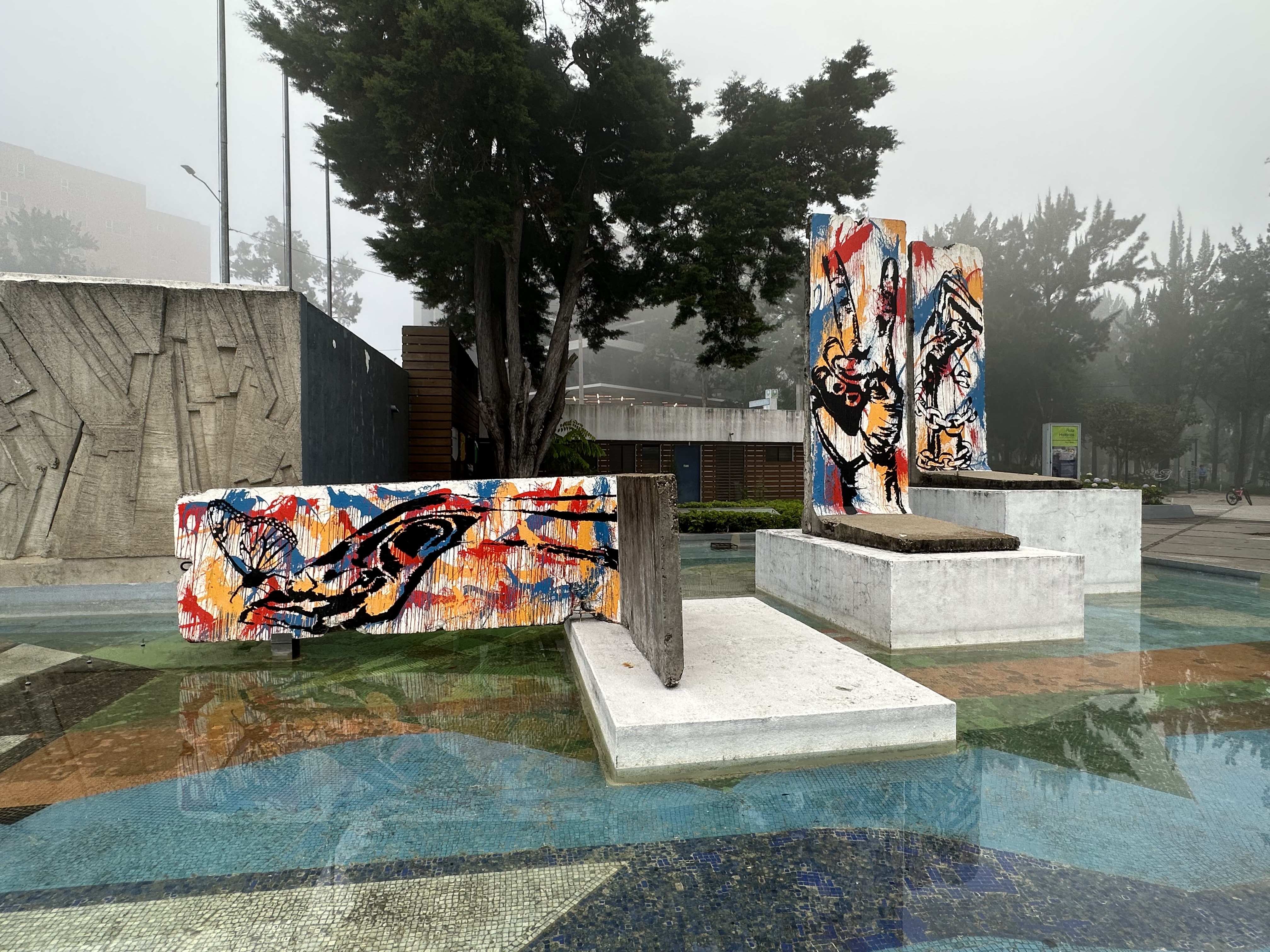
I shall now interrupt the blog with some regional facts.
Costa Rica 5 million people – 20,000 square miles – GDP PPP $12,500
El Salvador 6.5 million people – 8,000 square miles – GDP PPP $7,700
Guatemala 17.5 million people – 41,000 square miles – GDP PPP $5,200
Honduras 9.5 million people – 43,000 miles – GDP PPP $4,600
Nicaragua 6.5 million people – 46,000 square miles – GDP PPP $3,300
United Kingdom 67 million people – 94,000 square miles – GDP PPP $47,300
Guatemala City was quite modern compared to some cities we’d seen. One little curiosity I spied a couple of times, whilst being panoramically toured. Young men performing in front of cars at traffic lights. I saw two such youths – the first was displaying his football skills and the second was a juggler. Beats a squeegee handler in my opinion.
A few hours later we arrived at Lake Atitlan which was a beautiful place. We hopped on a boat and were transported across the lake to the village of Santiago Atitlan. The street vendors were a little more assertive but nothing that we couldn’t handle. I bought four belts, two scarves and a flute. Only kidding. Although when lunch turned out to be a fiasco I did buy two dwarf bananas from a Mayan lady.
I visited the church at the top of the hill which had some of the most curious religious figures I’d encountered. I gave some of them nicknames.
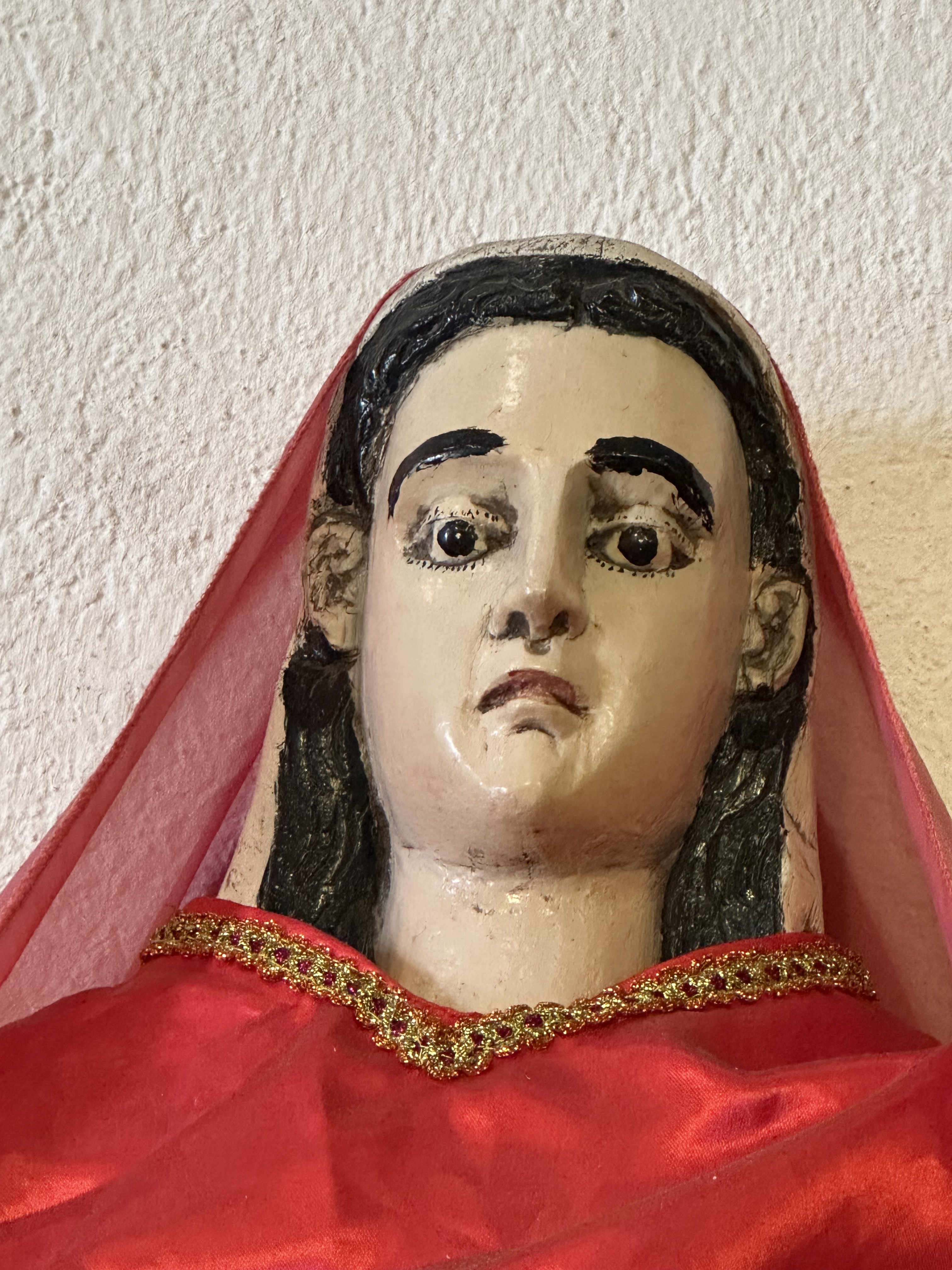
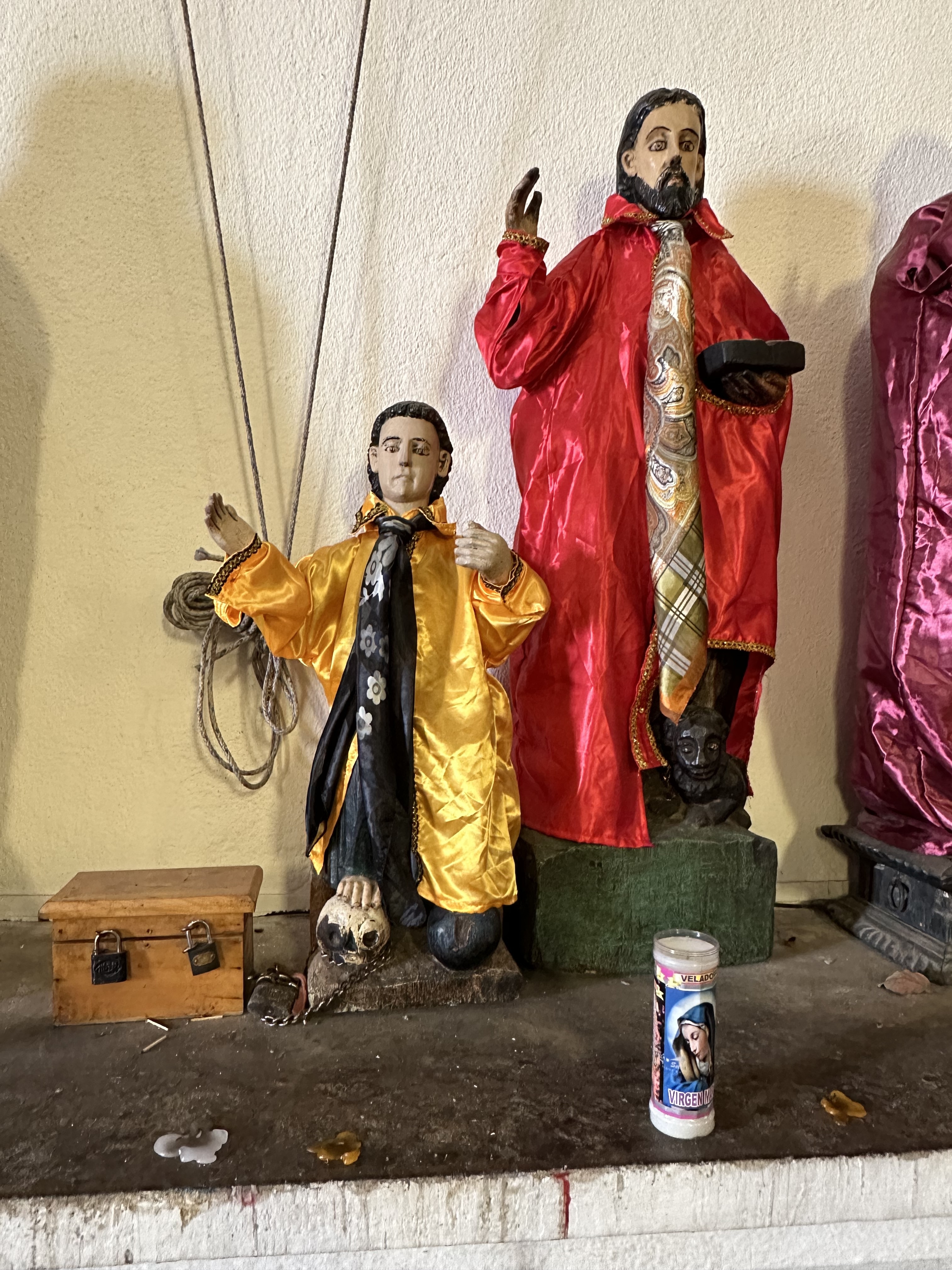
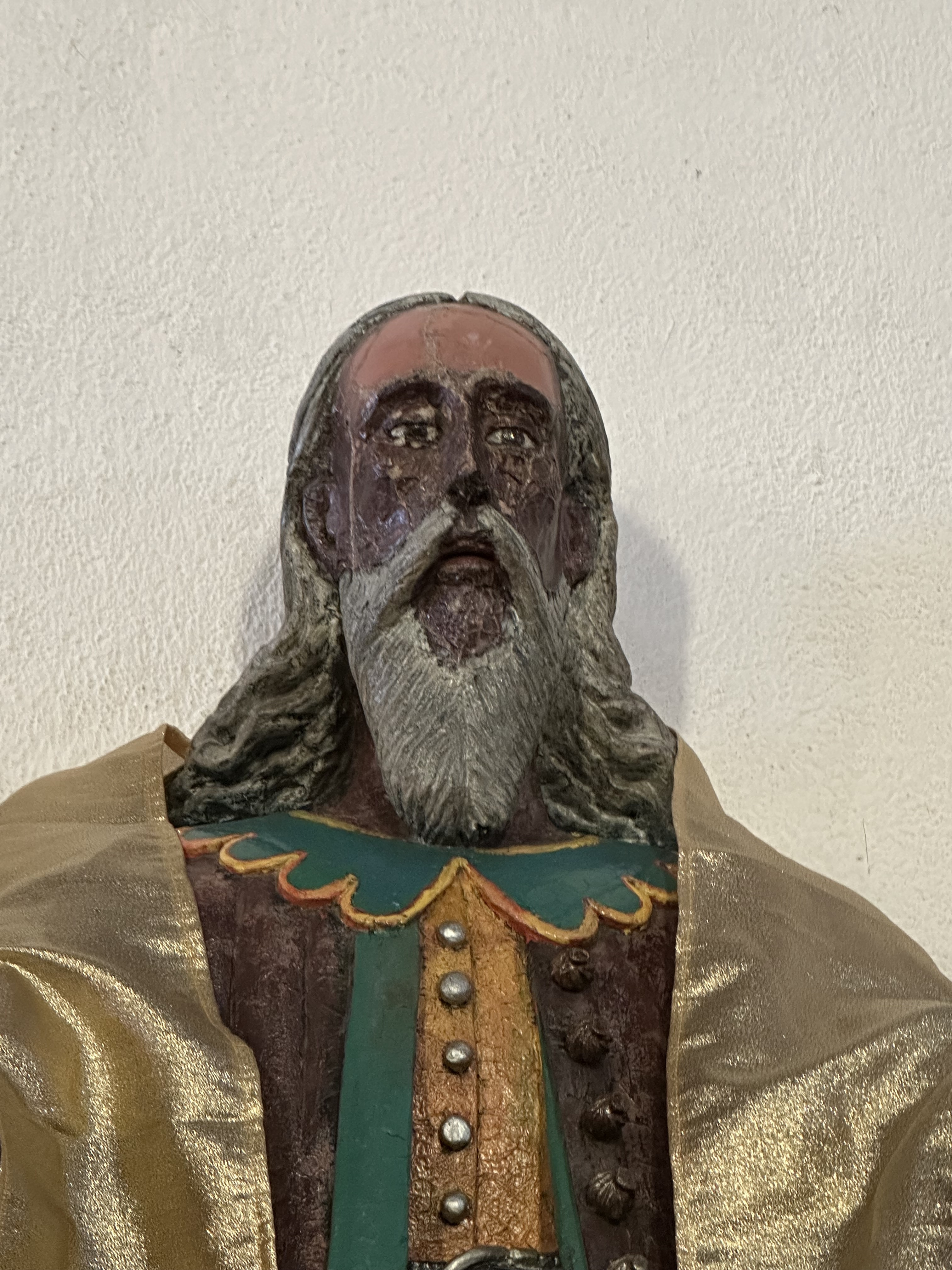
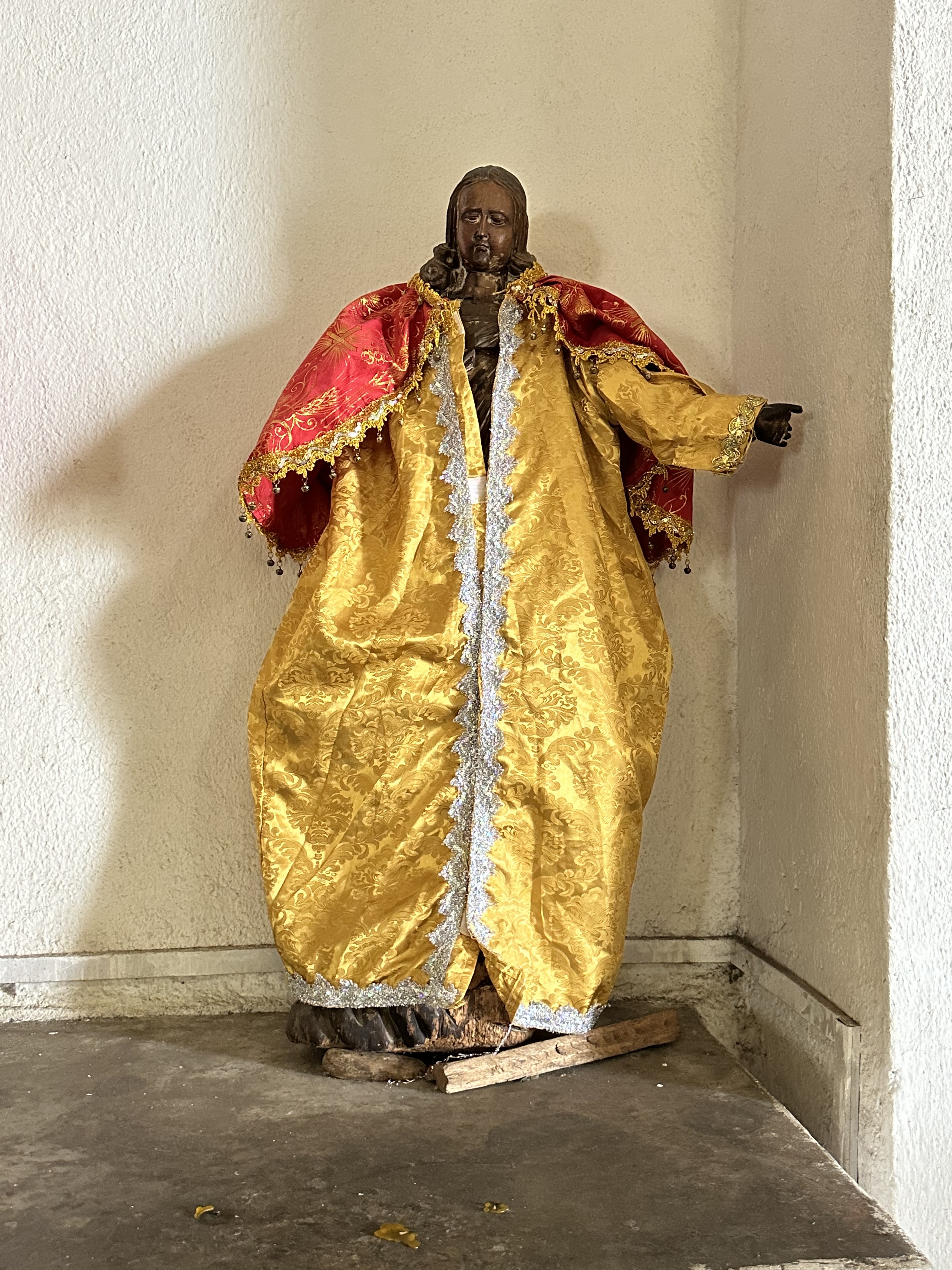
Miguel then mentioned we would be visiting a second town on the lake. I tried to organise a mutiny but to no avail. The second town was called San Antonio and it wasn’t anywhere near as interesting as the first lake village.
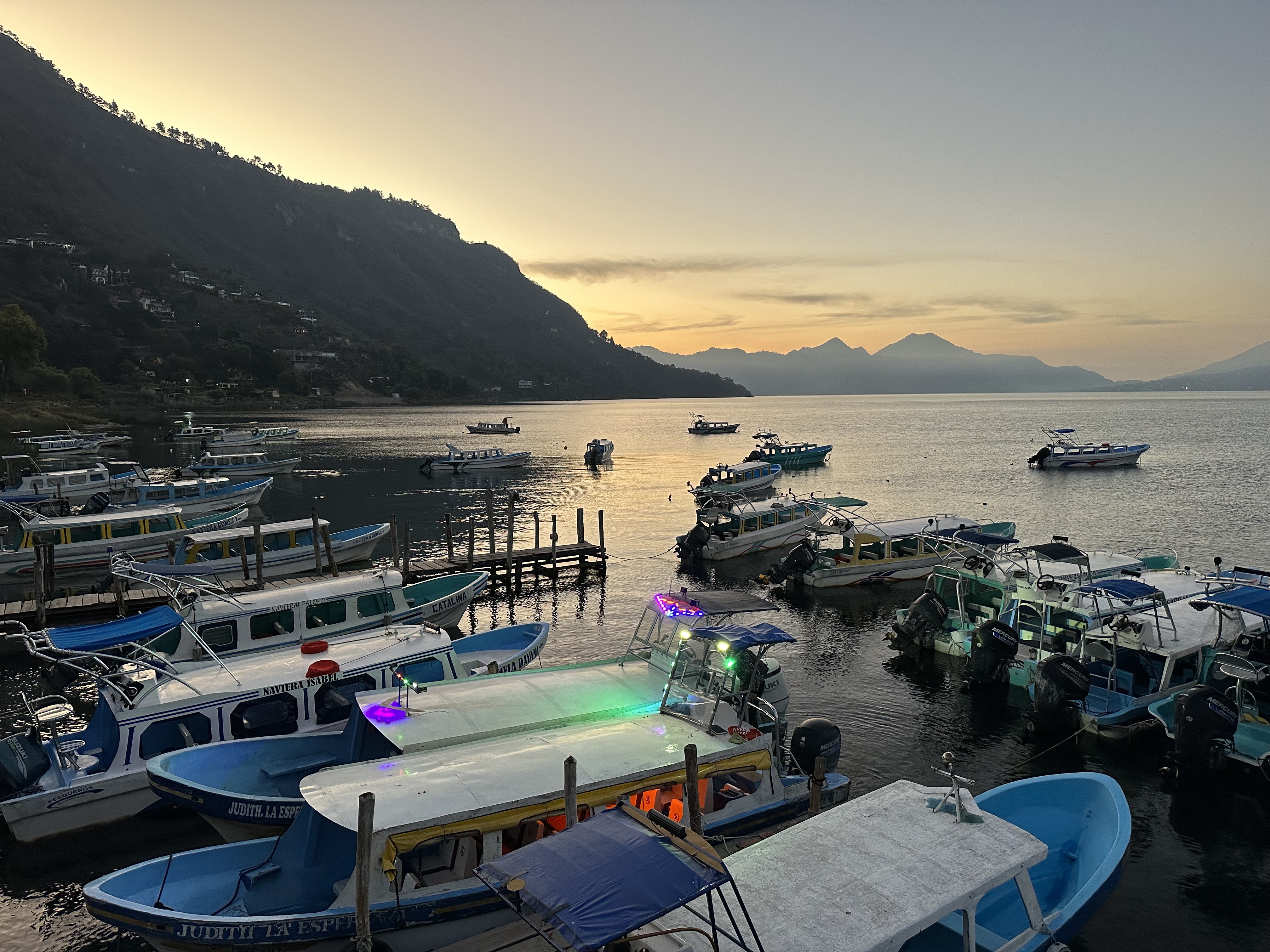
The final leg of the boat trip dropped us off by our hotel which was rather spiffing. The Santa Catarina on the shores of Lake Atitlan was highly acceptable.
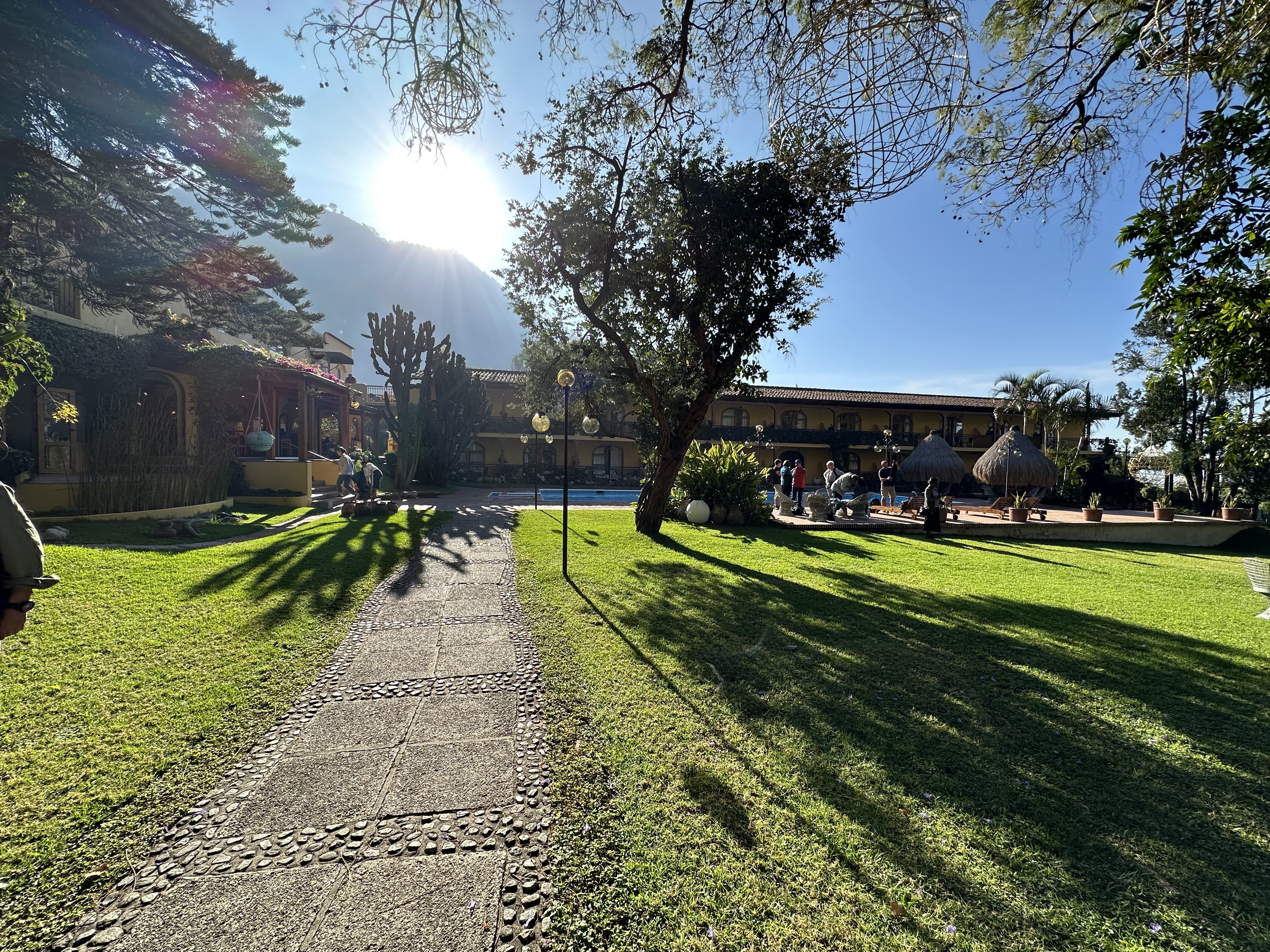
Day 14 – Lake Atitlan to Antigua
We left our lovely lake hotel and headed to our final destination of Antigua in Guatemala. On the way we stopped in the town of Chichicastenango. I don’t know about you, but I think there should be a maximum syllable limit on place names.
I was obviously a little more susceptible to the charms of the street vendors on this particular day. It started with a reluctant purchase of a bandanna. Candy was very determined. Not long after I was the proud owner of a colourful bookmark. And then I finally succumbed to Julio’s selling skills and bought a flute. Julio had learnt several languages including Hebrew in order to convince tourists from various nations to contribute to his woodwind enterprise.
The latest Shi update – the dark horse of the group. Not only can he sing opera in a number of European languages, but he owns a shipping company that his son runs. He has three ships which transport iron ore from Australia to China. The ships are called Excel, Transtime and Unicorn. Big ships.
Miguel took us to a very colourful cemetery and we had the privilege of witnessing a Mayan fire ceremony. There were a number of square concrete bases where people could hire a local shaman to perform the ceremony. We saw a few ceremonies occurring and each was a variation on a theme. Coloured candles arranged in a circle, eggs, cigars and incense (which looked like scotch eggs). Apparently chocolate bars are sometimes offered to the gods.
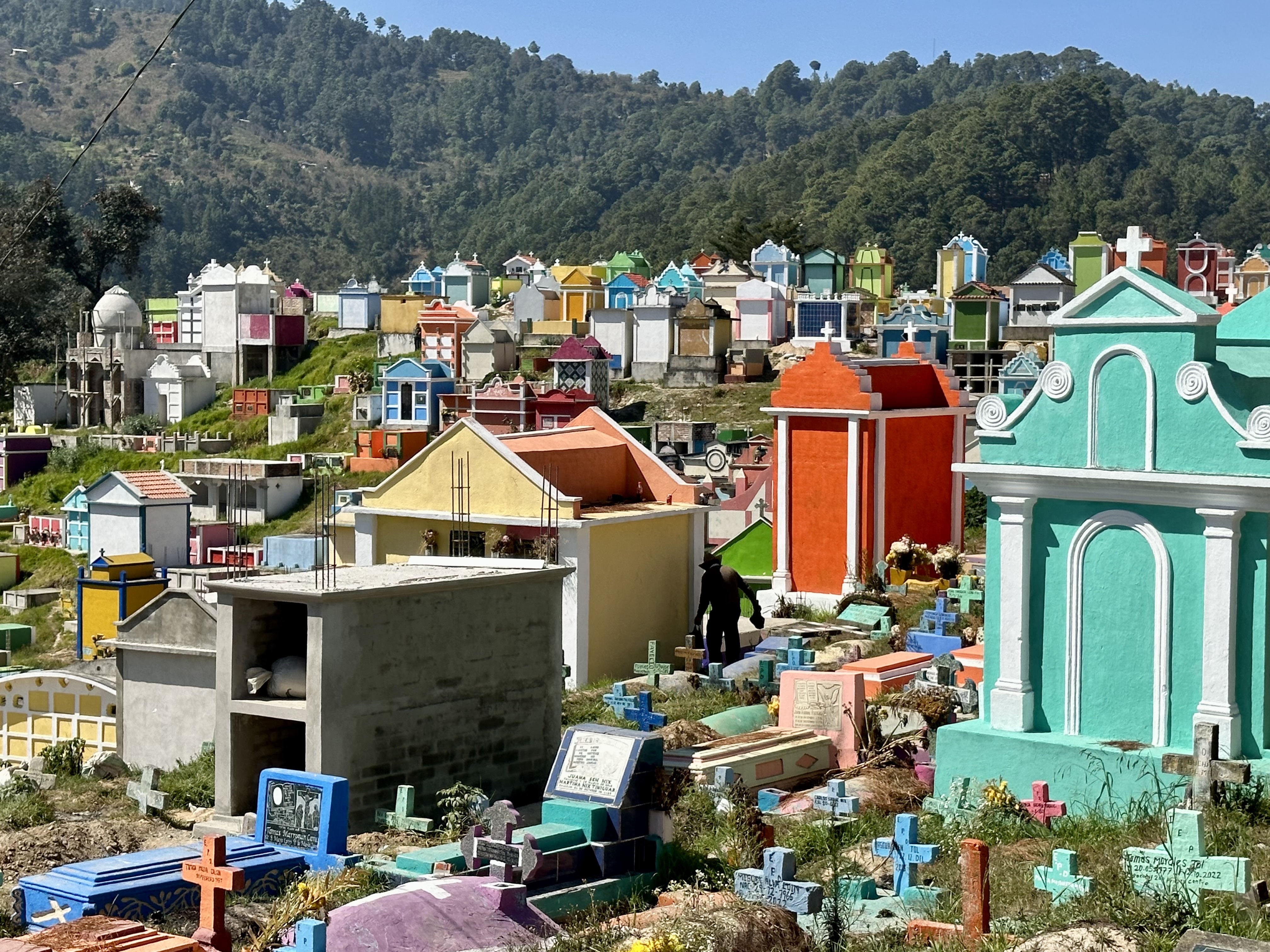
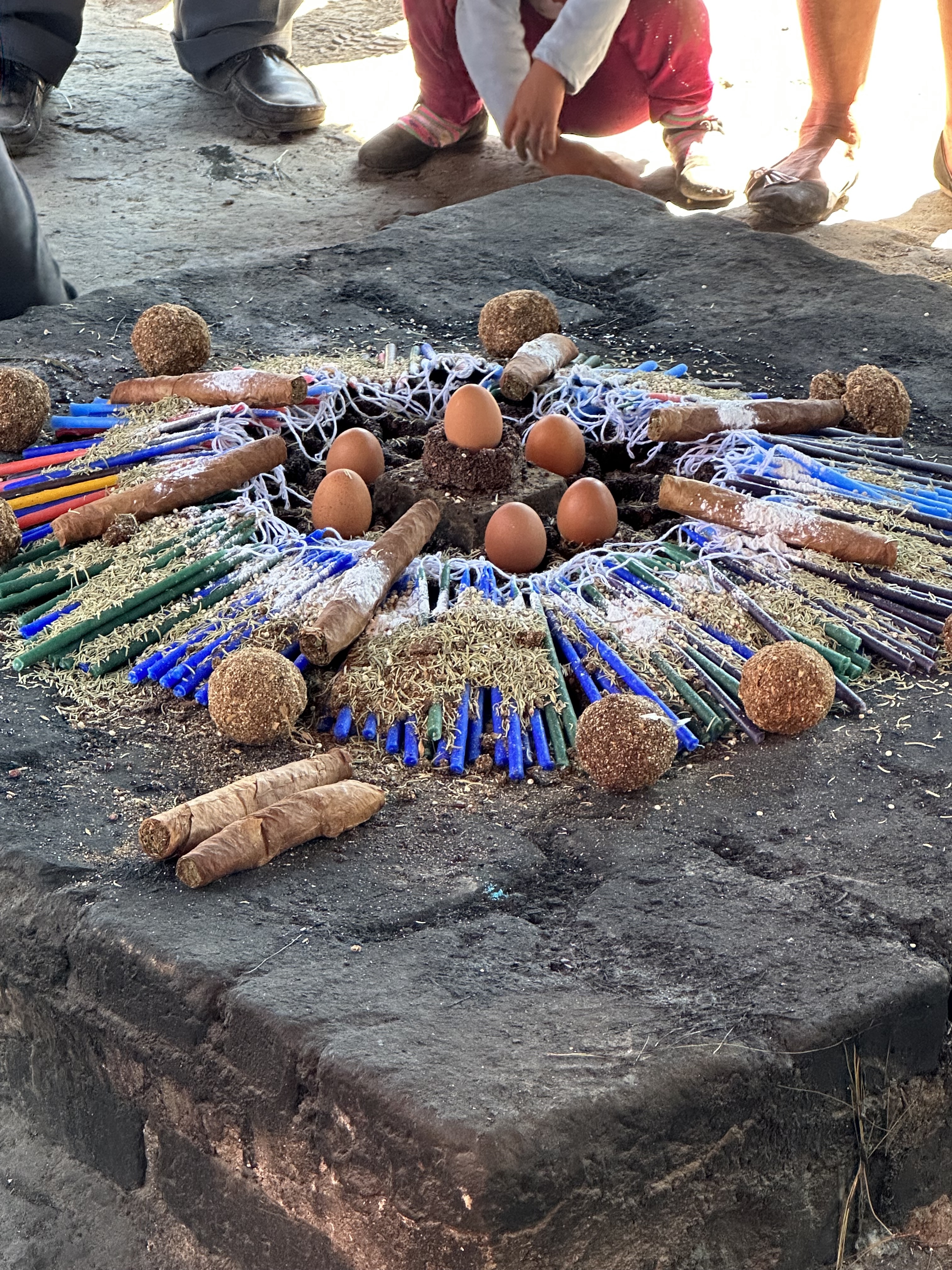
The family who hired the shaman all started puffing on these huge cigars and then the shaman lit the whole thing and in no time the offering was fully alight. The eggs exploded one by one. Only a shaman can perform the ceremony and they charge quite a lot of money. The one we witnessed hadn’t even dressed up in some sort of ceremonial outfit. He looked like the average twenty something chap in skinny jeans and trainers. Fire ceremonies are either for cleansing, protection or healing. It was quite the spectacle.
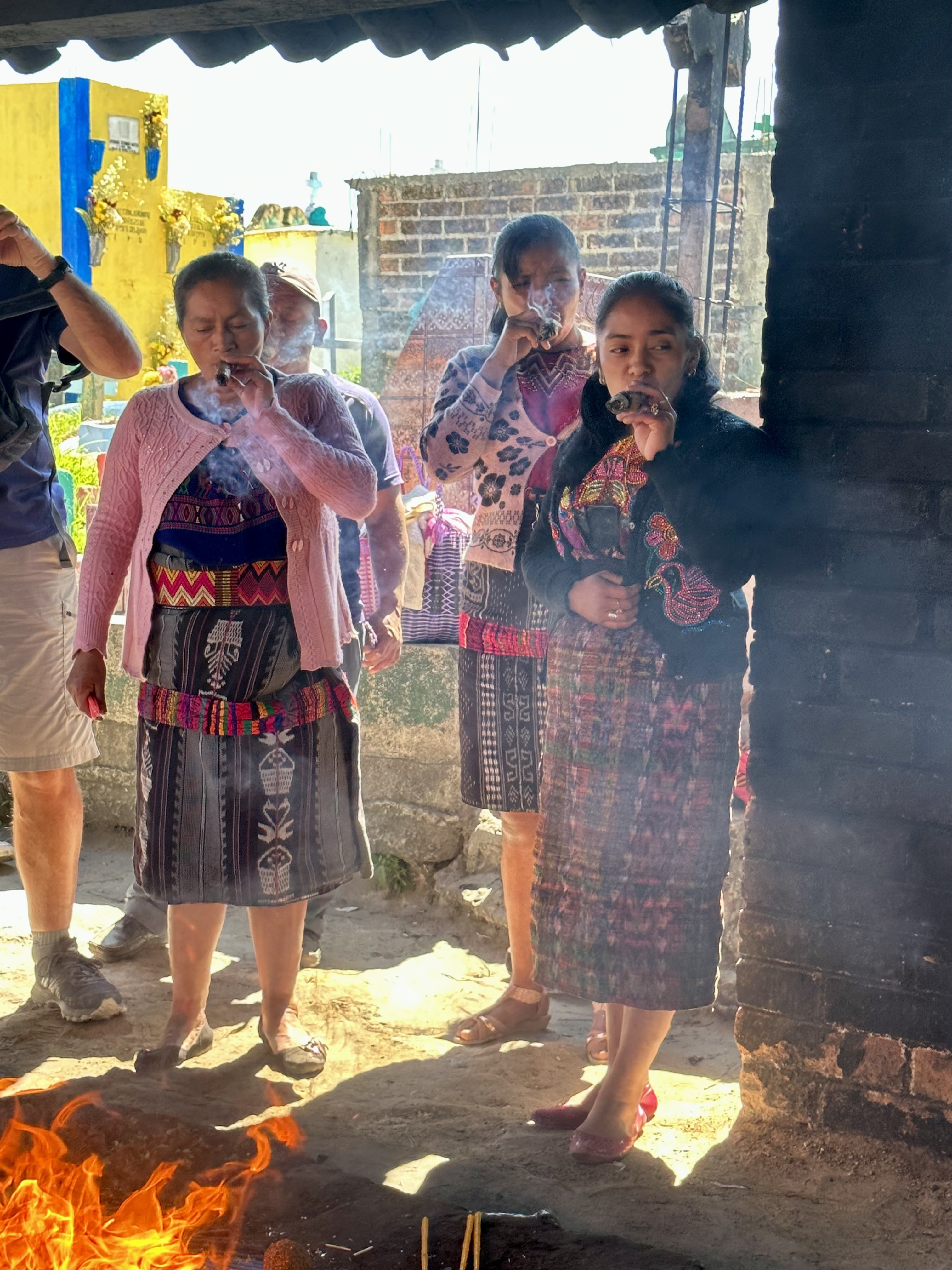
The Mayan Fire Ceremony is a way of creating a vortex of energy that can be used as a portal into the Spirit world, where we can receive healings and offer prayers. The Mayan fire ceremonies do not use any wood. With prayers, a mandala is created out of natural materials.
According to Miguel there are nine Mayan gods in the Underworld and 13 in the Heavens. The main god of the Underworld is Cizin which in Mayan means “stinking one”. In the Heavens it’s an old wise man called Itzamna which means “Iguana house”.
In my ignorance, I thought the Mayans were an ancient civilisation. I didn’t realise that there are still many Mayans practicing the culture today, mostly in Guatemala – 6.5 million of them.
After Chichi we pressed on to Antigua and checked in to the Villa Colonial for two nights. We strolled into town for dinner and I couldn’t help noticing a number of couples kissing. It was Thursday!
Day 15 – Antigua
This was our last day and Miguel was taking us on a walking tour of Antigua. It was a highly pleasant three hours walking around in beautiful sunshine and a perfect temperature. Antigua felt very safe in terms of an absence of menace, however, I wasn’t safe from the street hawkers. I ended up with two rosaries, two necklaces and a magnet.
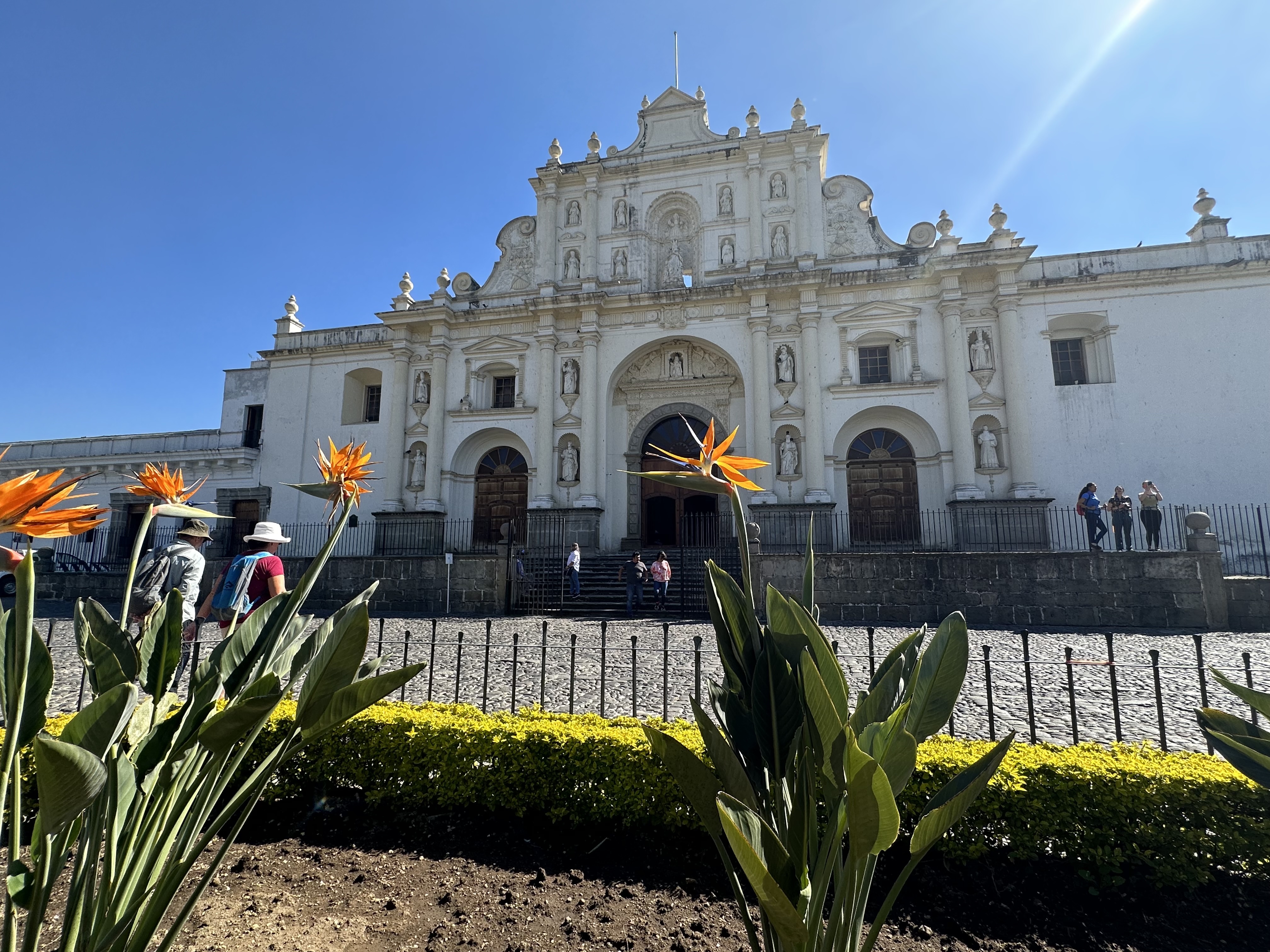
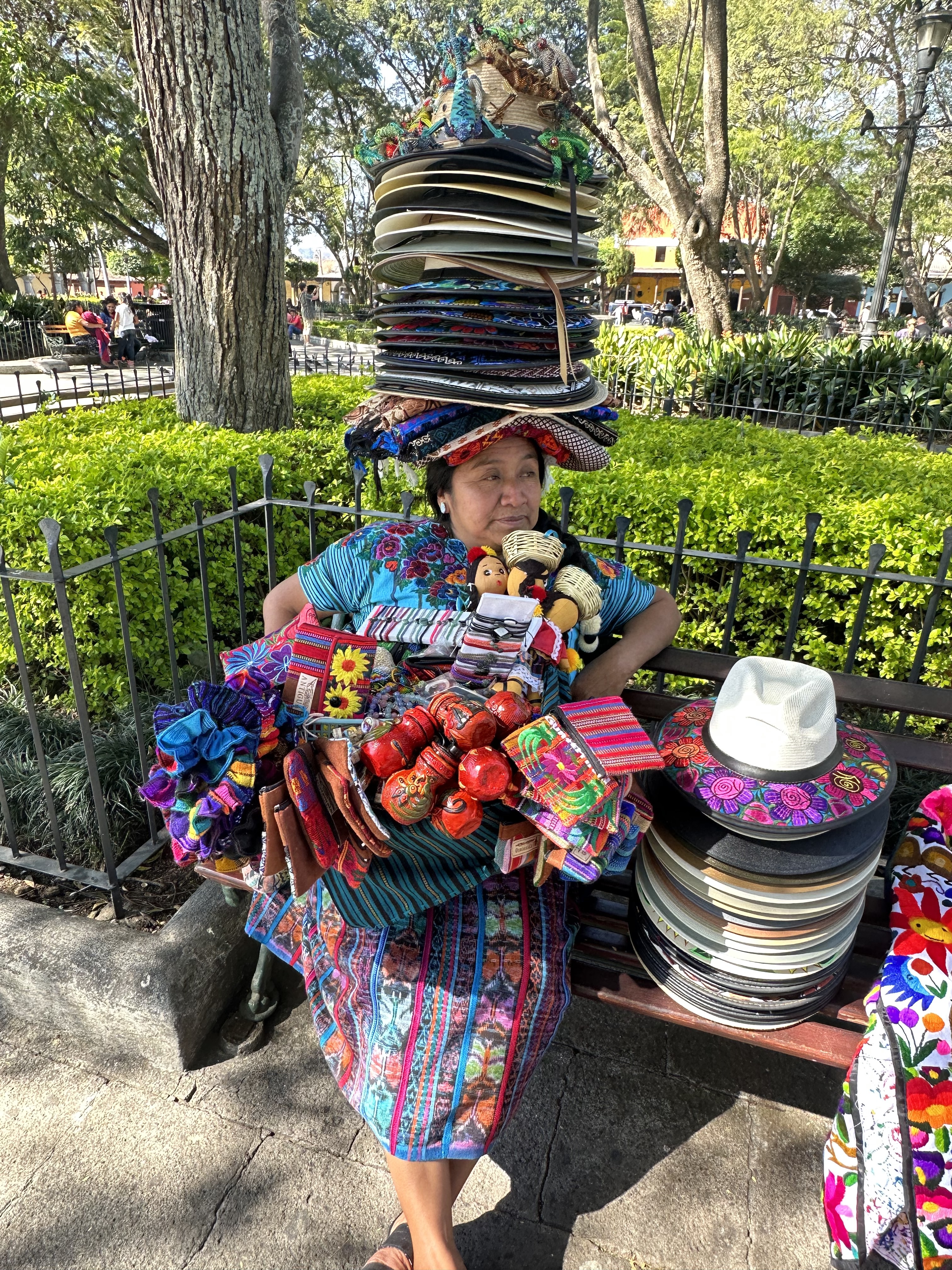
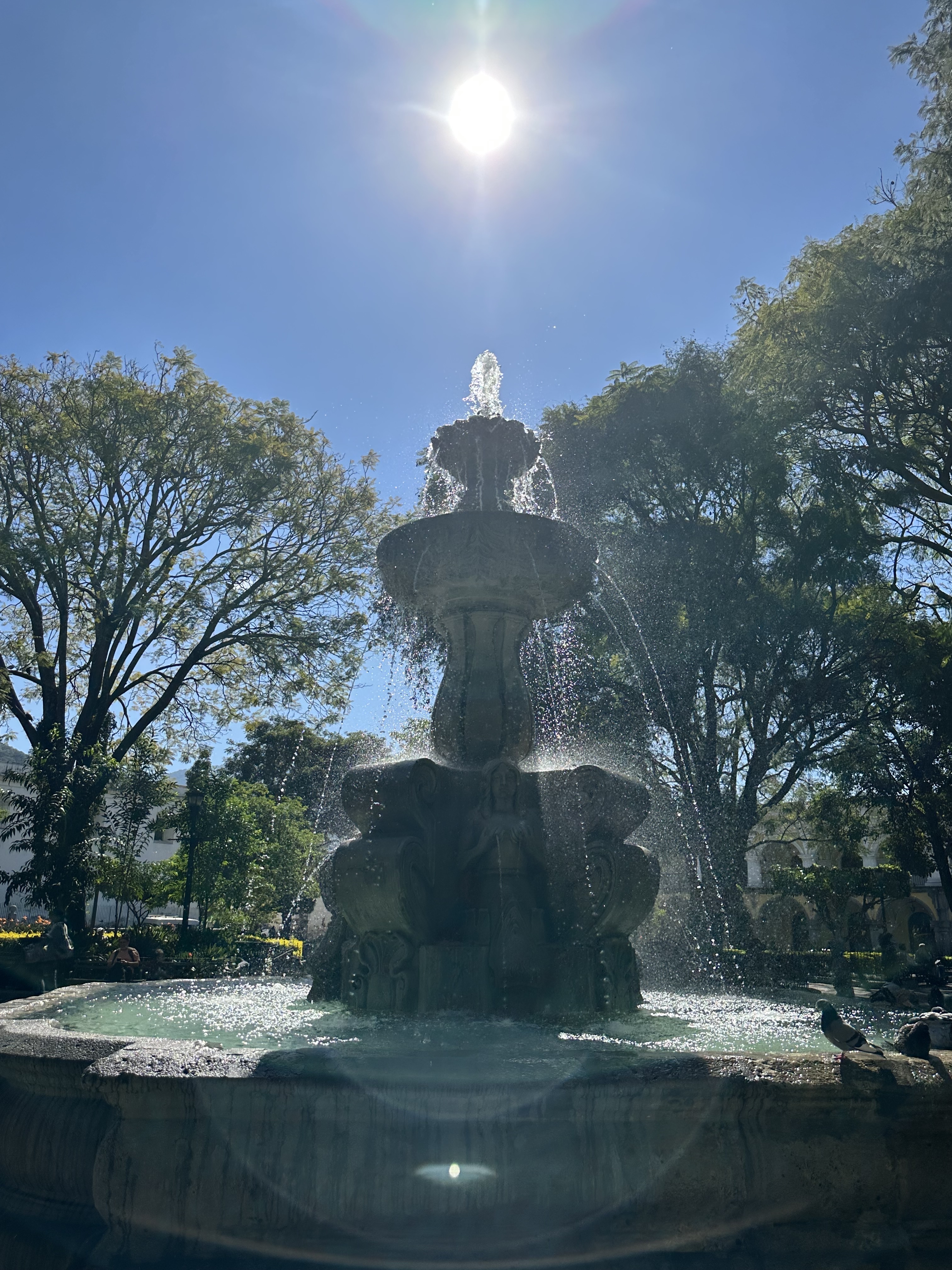
The most photographed landmark in Antigua is the Santa Catarina Arch on Calle del Arco. It was built in 1694 and was used by cloistered nuns from two convents. The nuns lived on one side and taught school on the other. Cloistered nuns were not allowed to have contact with the outside world (especially on a Thursday), so the arch enabled them to go between the two convents and remain cloistered.
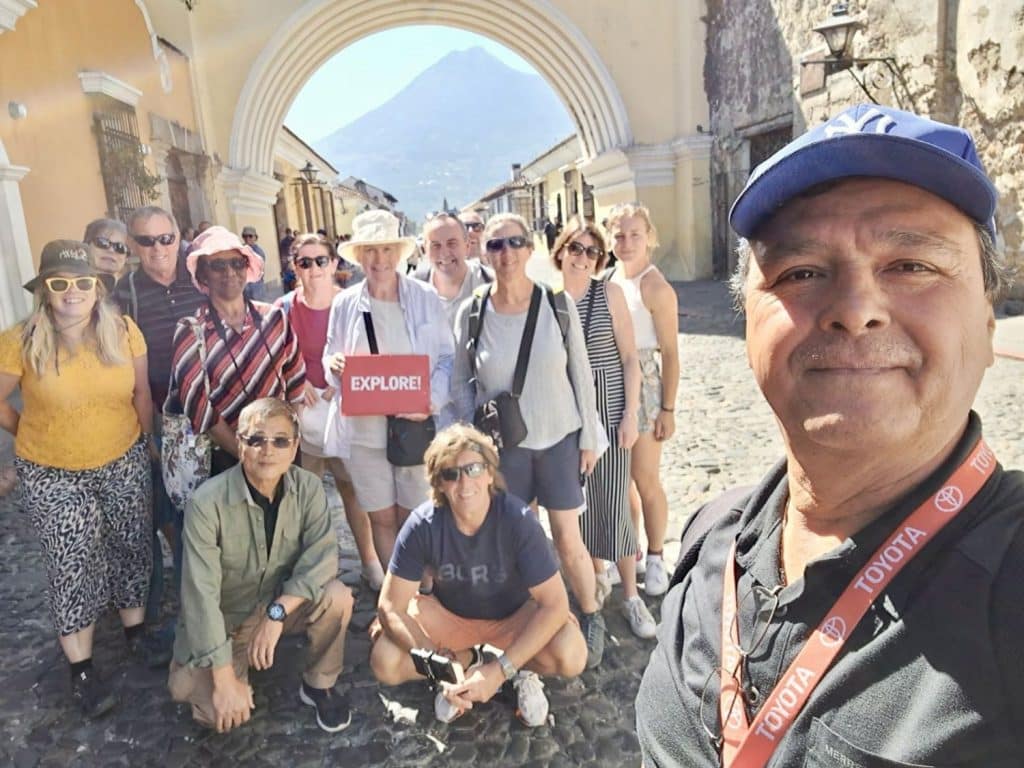
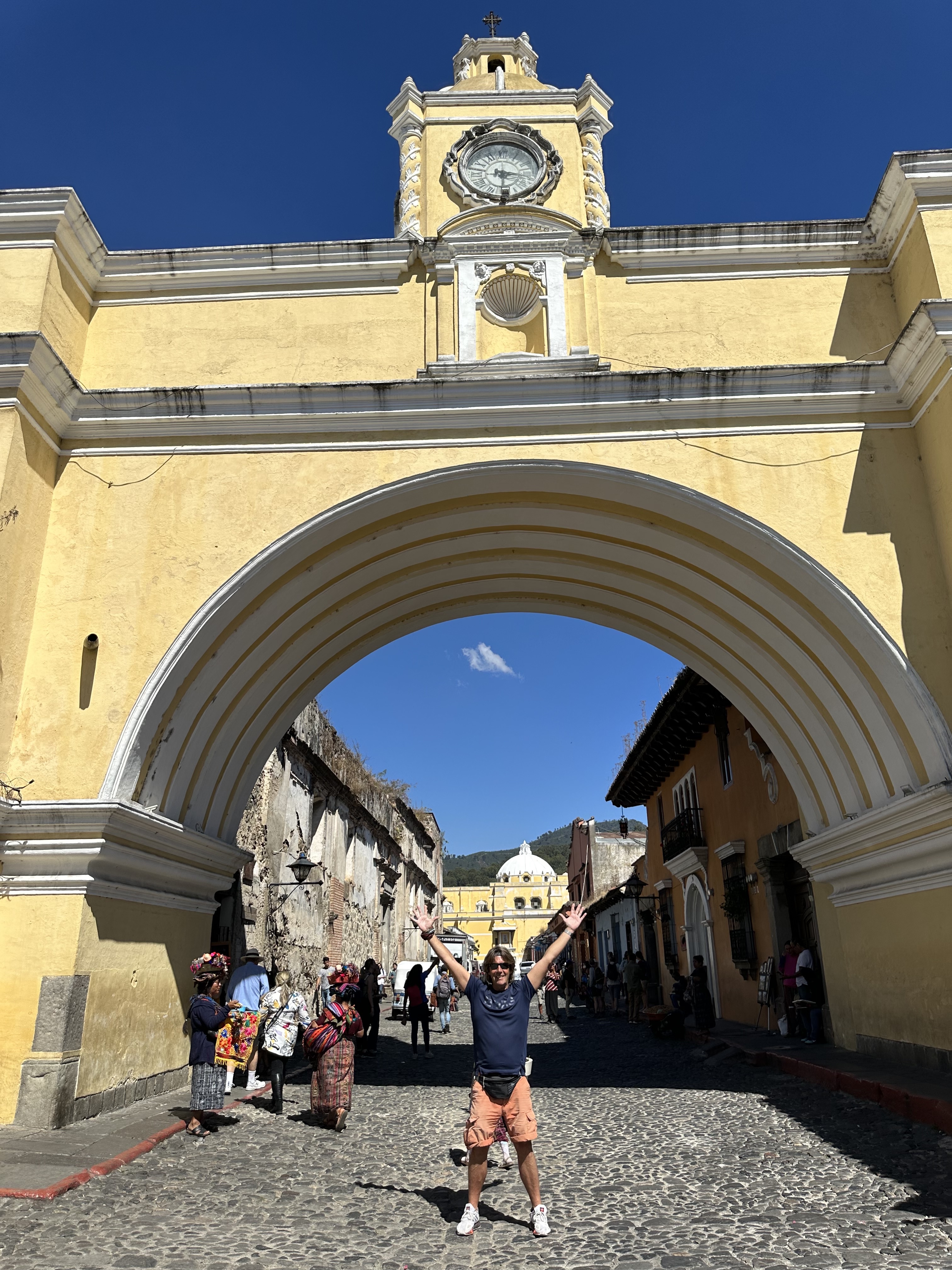
Antigua was a lovely city and the perfect place to end the tour. It even eclipsed Succitoto as my favourite place on the tour. I would happily return.
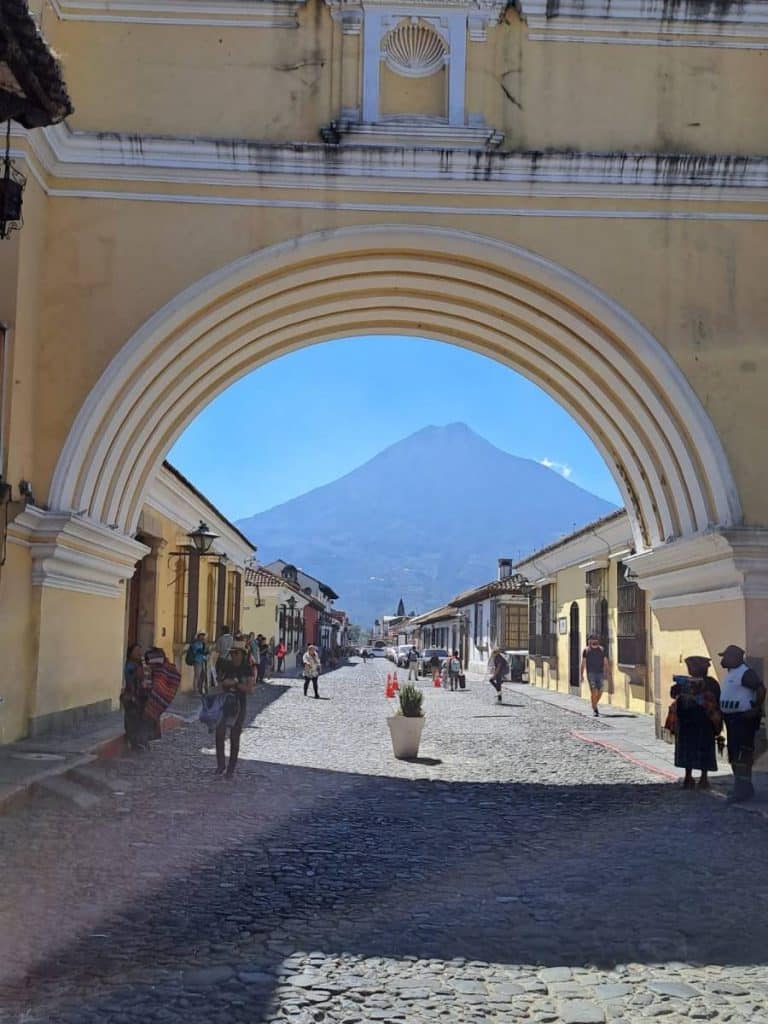
The weather had been superb throughout the trip. The group have been great company and some of the places we visited were fabulous. In many ways it’s felt like a fortnight in Lilliput.
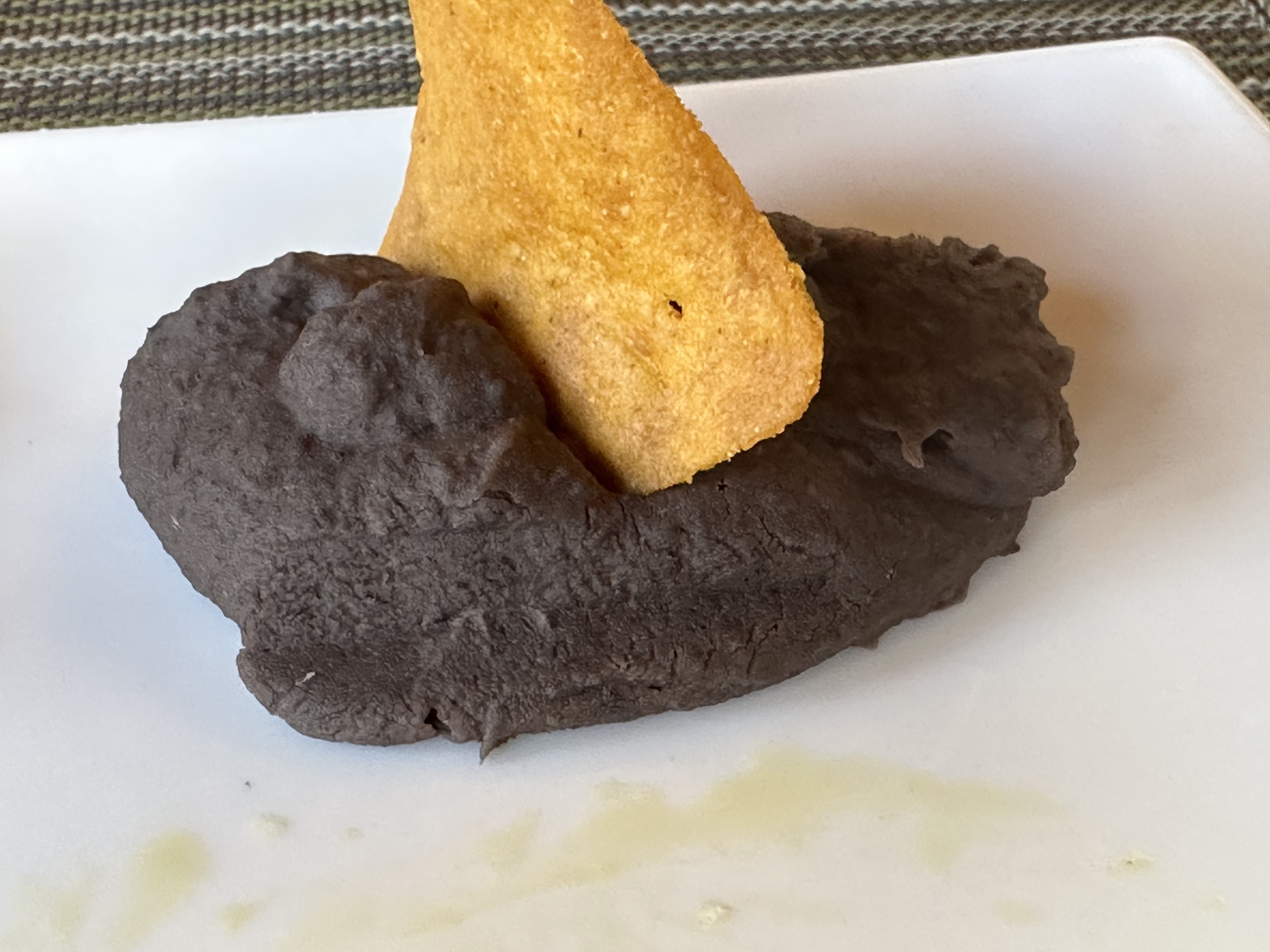

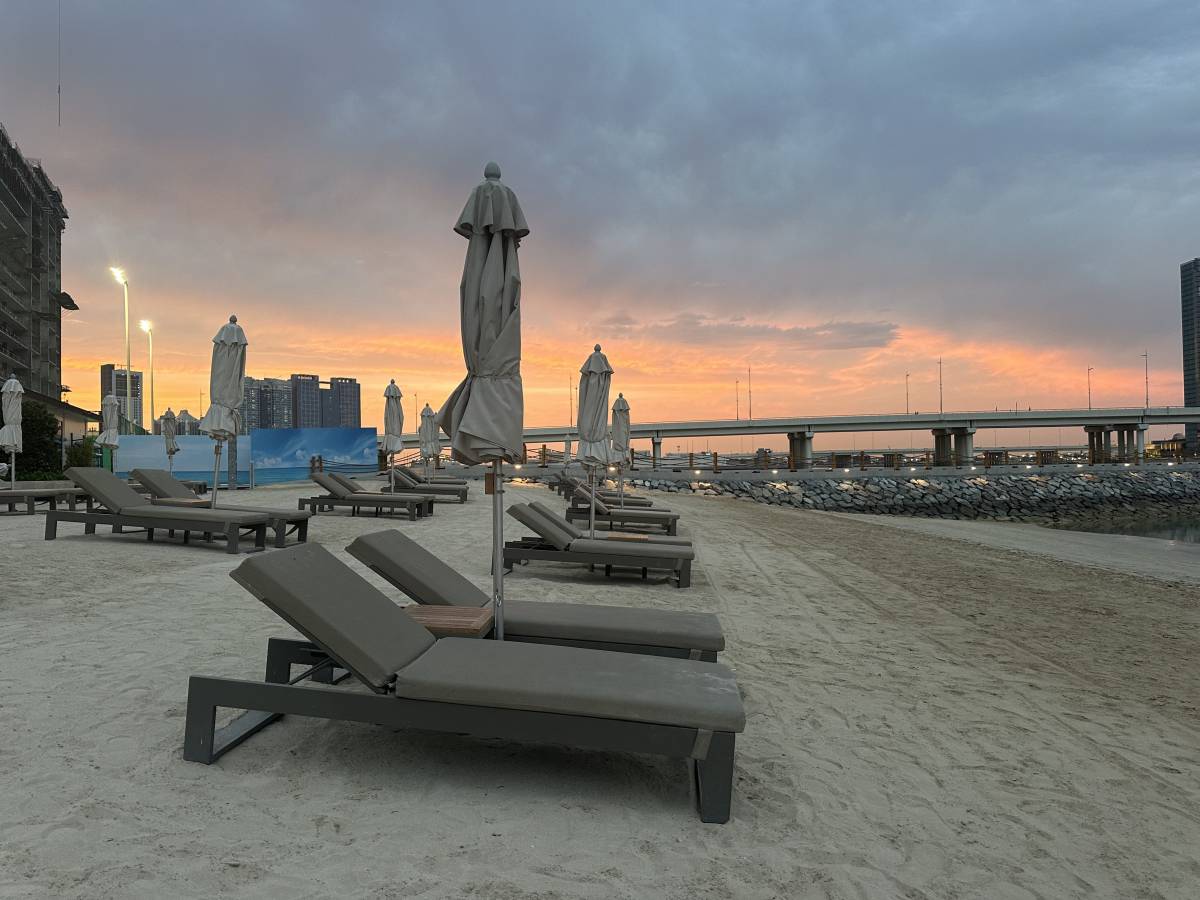


This Post Has 0 Comments